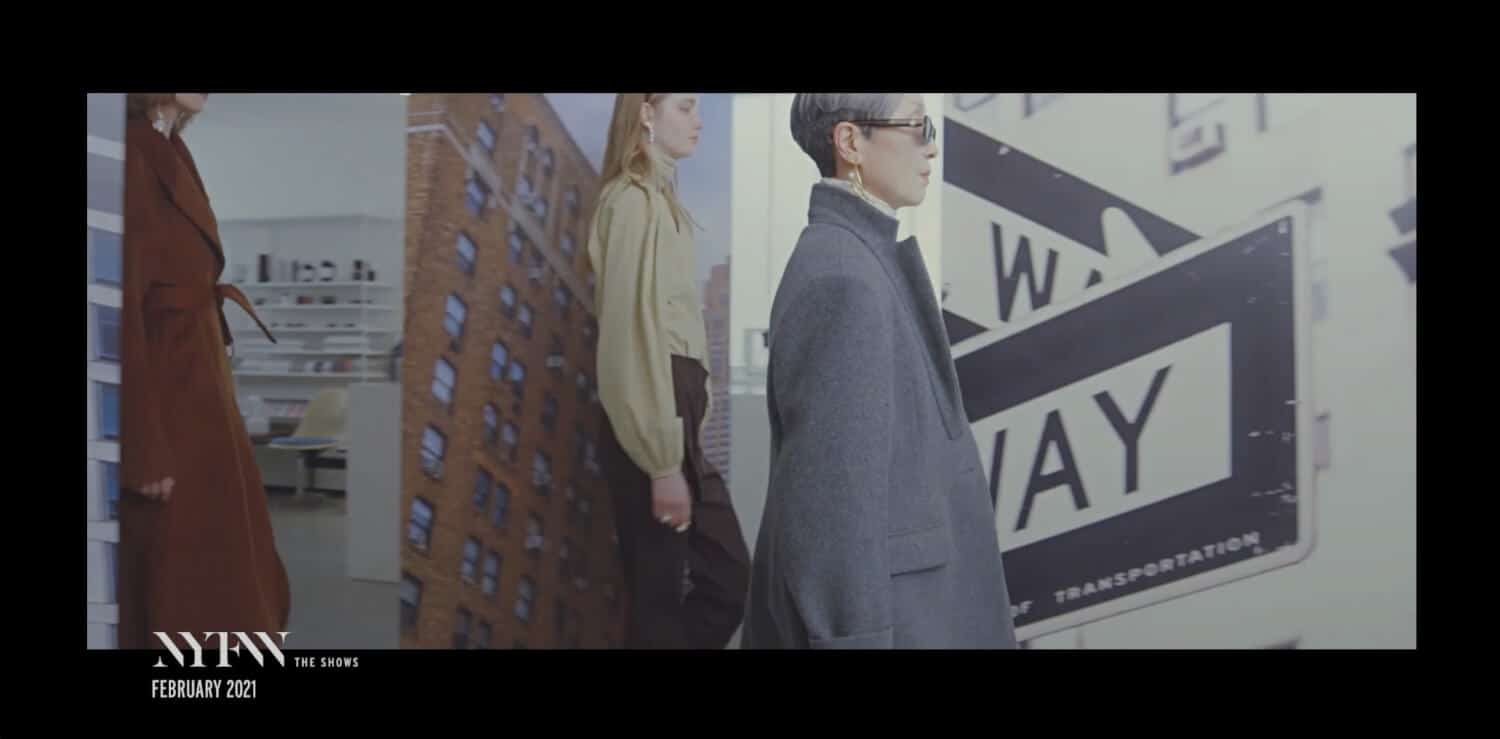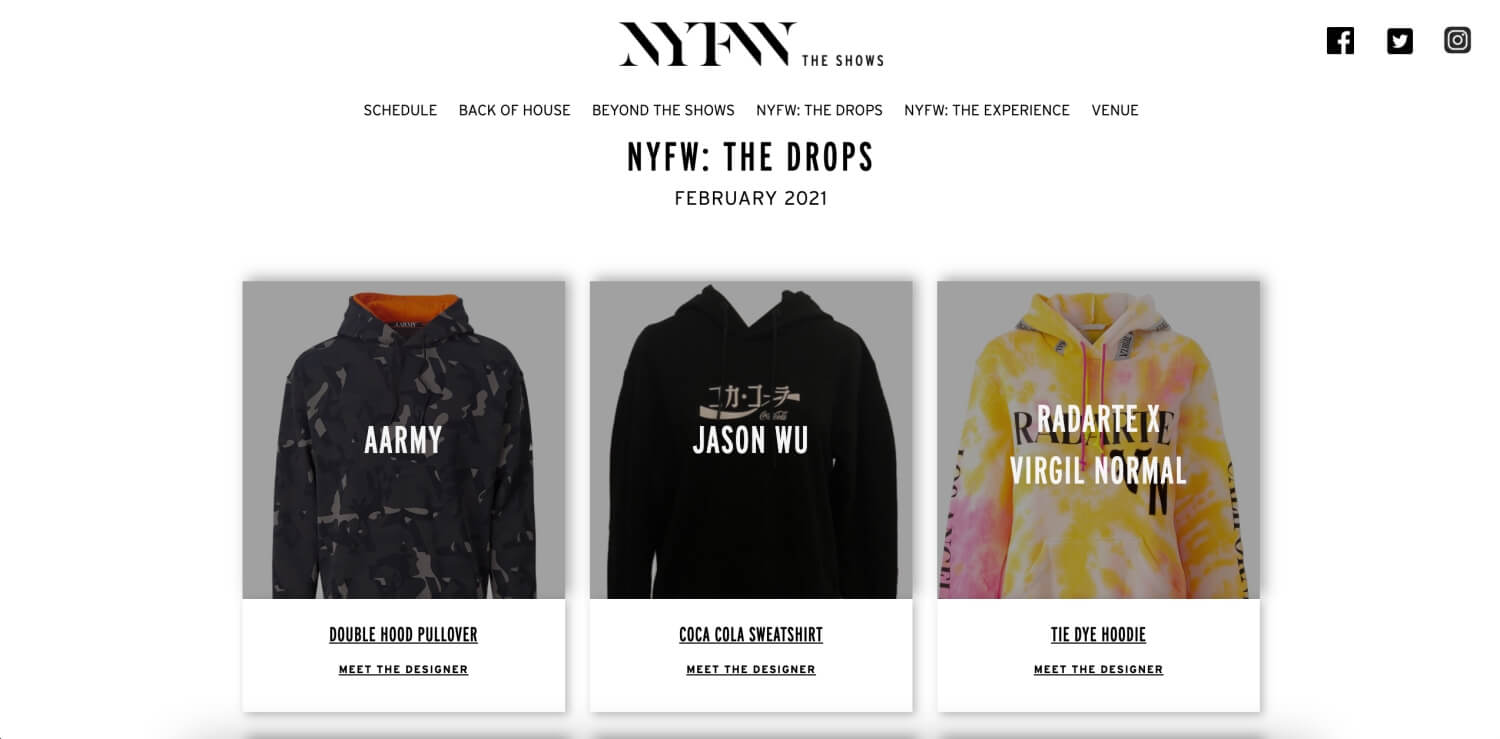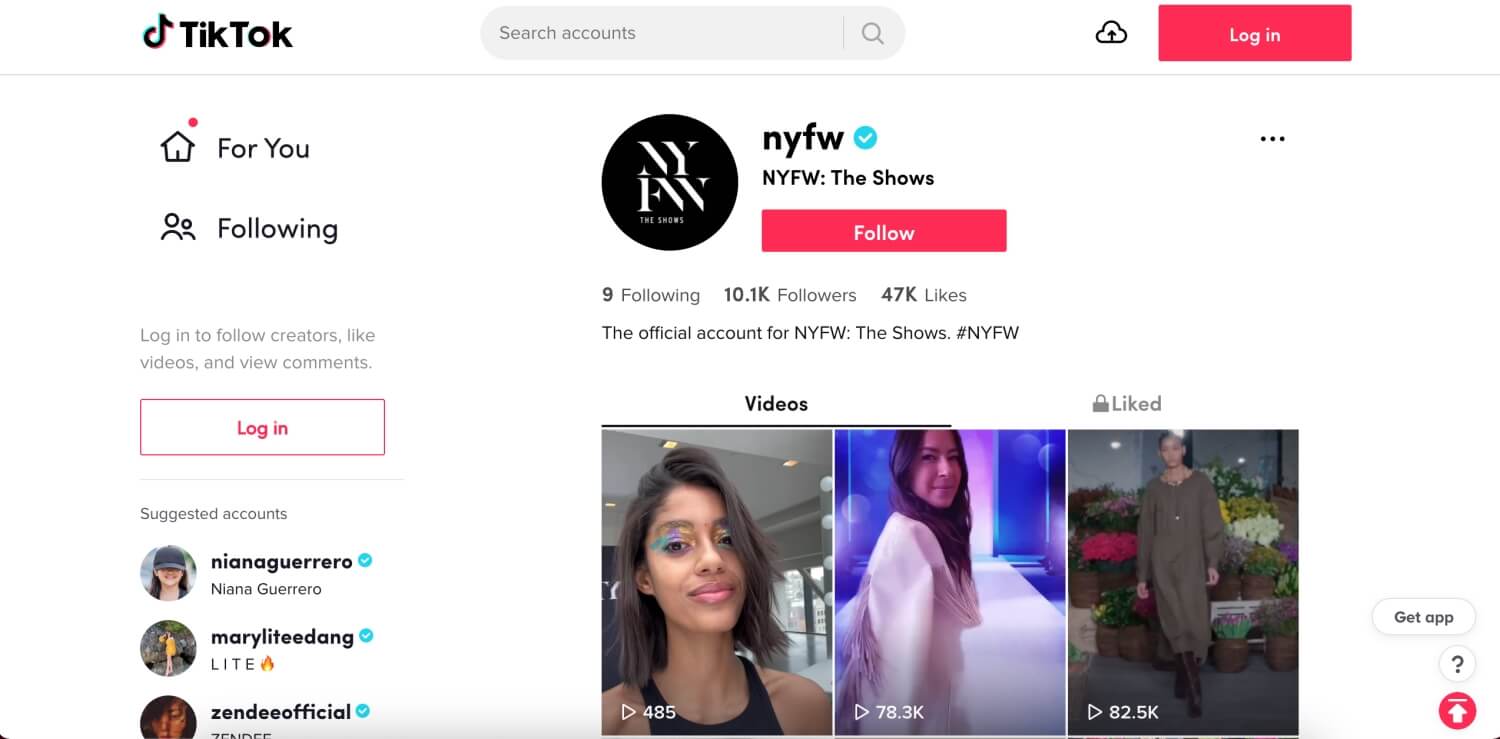From hybrid shows to purely virtual events, new channels, and even new business models, NYFW Fall-Winter 2021 was yet another testament to how an industry can (and should) continuously re-evaluate long-established structures. Innovation is a must in order to accommodate and stay ahead of our changing ecosystem.
Fashion weeks around the world have long been exclusive events for society’s most stylish elites. The mass adoption of social media has made fashion shows and fashion week parties more accessible, and in the wake of the COVID-19 pandemic, social and digital coverage of these events has gone from being a channel for “outsiders” to the main event.
This year, as brands let go of the traditionally strict fashion week schedule in favor of online and long-term engagement, we’re sharing four of the best digital experiences and key trends we saw at NYFW.
1. From Athleisure to Virtual Bootcamp at NYFW
It was once unthinkable to attend fashion week without stylish heels. This year, NYFW leaned into the worldwide demand for stay-at-home outfits by kicking off the four-day event with a virtual bootcamp.
Perfect for spectators who were already in workout clothes, cozy loungewear, and multipurpose athleisure outfits, the online class was led by on-demand fitness brand AARMY. Familiar to most of us after a year of working out from home, online workouts are new territory for fashion week. However, this activity was the perfect way to bring the brand’s clothing to life ahead of its latest collection drop. It was also a reminder that for today’s modern consumer, brands are about more than just their products — the experiences they provide are equally important.

2. Experimenting With a New Wave of Social Media Platforms
One of the hottest headlines from this NYFW was apparel designer Rebecca Minkoff’s debut streaming content on OnlyFans. The content subscription service has grown in popularity in recent years, though it is mainly used by adult performers. Minkoff has kicked off a new trend, taking over a platform not yet used by fashion brands to deliver authentic content to fans.
Other social platforms that are taking off for brands following fashion week are gamer-centric channels Twitch and Discord. The invite-only feature of both networks has resulted in like-minded communities that enable brands to create highly-targeted campaigns and activities. Burberry was the first to livestream on Twitch for its Spring-Summer 2021 show, and the trend is continuing.
Dubbed as an alternative to TikTok, Thriller is a video-making and social-sharing app that’s also seeing a surge in new users and brand partnerships. L’Oréal’s NYX brand famously held a virtual concert on the platform along with an augmented reality pop-up shop — and fashion often follows on the platforms beauty brands and influencers flock to.
3. Multi-Format Fashion Shows
In-person fashion shows were few and far in between this past week. Jason Wu and Rebecca Minkoff held socially-distanced physical shows, while the rest opted to showcase their designs in digital formats. Without the excitement and mood-setting advantage of live runway events, designers had to be truly creative and unique online in order to leave a lasting impression.
In fact, a true innovator this year, Rebecca Minkoff partnered with Verizon’s Yahoo Ryot Labs to create an immersive AR version of her physical NYFW show for mobile viewers.
While not quite as “high-tech,” Concept Korea showcased three separate themes in one video, bringing viewers into various dimensions and contexts. At a time when many of us aren’t dressing up to go anywhere, putting clothes in context can inspire consumers and create aspirational styling ideas. Taking another approach, Rodarte went for a nostalgic documentary, reviewing 15+ years of apparel design. Despite the different approaches, both video formats were an effort to transport consumers from their everyday reality of staying home into a new world.
In addition to video, podcasts also took center stage. NYFW’s “Well Suited” podcast featured in-depth conversations with some of the leading talent in the industry, and after Netflix’s The Queen’s Gambit caught the attention of fashionistas worldwide, they also interviewed chess champion, comedian, and social media sensation Elsa Majimbo.

4. Balancing Limited and Extended Experiences
Over the past year, flexibility has become a consistent theme within the fashion industry. And while we often think of this in terms of supply chain and sales channels, it also extends to the delicate balance of maintaining exclusivity while finding creative ways to reach new audiences.
In a departure from fashion week norms, we’ve seen designers inviting influencers to collection previews and giving consumers backstage peeks at high-profile shows.
This NYFW, exclusivity came in the form of limited merchandise drops from five of the season’s participating designers such as Jason Wu and Prabal Gurung. To access the special collections, shoppers must be subscribers at NYFW.com.

However, more notably, many designers have made the choice to break free of the constraints of NYFW altogether, opting to showcase their collections independently. According to Tom Ford, the Council of Fashion Designers of America’s chairman, the organization recognizes “the need for some to broaden their global visibility. In the past few years, many of our members have chosen to show in Europe, Asia, and other key markets, and in many cases off-calendar.”
Without the shows to anchor NYFW into place, the CFDA has actually set out to rebrand NYFW as the American Collections Calendar to include American designers who are not based in the city or who choose to release collections on an independent date, such as Oscar de la Renta and Jonathan Cohen. This “extension” of fashion week promotes inclusivity and gives brands more freedom to be creative in how they display their collections.
Another example of an extended fashion week experience is the TikTok Fashion Month. The recently launched initiative, in partnership with IMG, is set to feature premium runway shows and livestreams throughout the Fall-Winter 2021 global fashion weeks in New York, London, Milan, and Paris.

What’s next for NYFW?
If we had to sum it up in a word, NYFW 2021 was all about experimentation. The rush of jampacked live shows was certainly missed, but it also forced organizers and designers to think outside the box. It’s likely that many of the digitized aspects of fashion week will become permanent mainstays moving forward, as designers strike the perfect digital-physical balance.
Keep your eyes peeled for more experimentation and creativity as fashion “week” continues around the world:
- London Fashion Week Fall-Winter 2021 – Feb 19-23
- Milan Fashion Week Fall-Winter 2021 – Feb 23-Mar 1
- Paris Fashion Week Fall-Winter 2021 – Mar 1-9
- American Collections Calendar – Feb 4-Apr 15